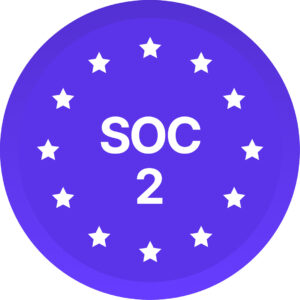A fast-growing fintech lost three senior managers in 90 days. The CEO was baffled, compensation was competitive, the culture felt positive, and exit interviews consistently mentioned how much people enjoyed working there. But when pressed for specifics, the real issue emerged: lack of growth opportunities, not compensation, was driving talent away.
This story is playing out in boardrooms everywhere. Despite unprecedented investment in employee benefits, wellness programs, and culture initiatives, organizations are hemorrhaging their best people. The reason isn’t what most leaders think.
The Career Development Crisis Hidden in Plain Sight
Recent research reveals a staggering disconnect: 94% of employees say they would stay longer if companies invested in their career development, yet only 29% report being satisfied with advancement opportunities at their current company. Meanwhile, 87% of millennials rate career growth as important, but most organizations still treat development as an afterthought.
The financial impact is brutal. Industry research shows that losing a high performer costs 200-400% of their annual salary in replacement, training, and lost productivity. But the hidden cost is even higher: these employees often join competitors, taking institutional knowledge, client relationships, and innovations with them.
Why Smart Companies Still Get Development Wrong
Most organizations make the same fundamental error: they confuse training with development. They invest heavily in skills programs, leadership workshops, and learning platforms, then wonder why people still leave.
Here’s the truth: Development = Training × Opportunity
Training provides the tools and knowledge. Opportunity provides the platform for growth. When either element is missing, the multiplication effect breaks down, and talented people plateau, then leave.
Consider this pattern we see repeatedly: companies spend millions on manager training but have no formal mobility process. Within 18 months, 40% of those newly trained managers leave, citing lack of upward opportunity as the primary reason. Organizations essentially train people for opportunities they’re not creating internally, subsidizing their competitors’ talent pipelines.
The Three Pillars of Opportunity Infrastructure
Organizations that consistently retain and develop talent across all backgrounds have built systematic opportunity infrastructure around three core elements:
1. Fair Management: The Foundation of Trust
Fair management isn’t about treating everyone identically, it’s about applying consistent standards, transparent processes, and equitable support. When fairness breaks down, so does trust. And without trust, even the best development programs won’t retain talent.
What this looks like in practice:
- Transparent performance standards where people understand exactly what excellent performance looks like
- Consistent feedback tied to performance outcomes, not manager favoritism
- Calibration meetings where advancement decisions are made collectively with data, not individual manager opinions
- Recognition based on contribution and impact, not politics or proximity
One financial services firm transformed their promotion process through cross-functional panels that reviewed all candidates together. Instead of individual managers making decisions in isolation, each candidate was presented with specific evidence: quantified achievements, 360-degree feedback, and demonstrated capabilities. The results were striking, promotion rates became more equitable, and employee trust in the process increased significantly.
2. Networks & Mentorship: Democratizing Access
The most critical career accelerators happen through informal relationships: the sponsor who advocates for your promotion, the mentor who shares insider knowledge, the colleague who alerts you to new opportunities. But when these networks form organically, they tend to exclude people who don’t fit the traditional mold.
The distinction matters: Mentorship offers guidance, helping people understand organizational dynamics and develop skills. Sponsorship opens doors, actively advocating for promotions and using influence to advance careers. High-performing organizations need both.
At OMERS, one of Canada’s largest pension funds, they built a 9-month leadership program specifically for women hitting career plateaus around director level. But what made it powerful wasn’t just the content, it was the access. The CHRO championed it, managers set real development goals, and senior leaders served as sponsors. More than half of participants were promoted within a year.
3. Career Development: Making Growth Visible
The most frustrating experience for ambitious employees is hitting an invisible ceiling, knowing they want to grow but not understanding how. Clear career pathways don’t just help individuals plan their growth; they signal that advancement is possible and merit-based.
One financial services firm created “career blueprints,” visual roadmaps showing multiple paths to advancement, required skills for each step, and available development resources. Instead of traditional job ladders, they created lattices showing lateral moves, cross-functional opportunities, and different routes to leadership.
The impact was immediate: internal mobility increased by 60% within two years, and advancement became more equitable as the blueprints democratized information previously available only to insiders.
The Warning Signs Your Development System Is Broken
Smart organizations track opportunity infrastructure through leading and lagging indicators:
Warning signs to watch for:
- High performers leaving for “better opportunities” elsewhere
- Advancement concentrated among similar employee profiles
- Long tenure without progression among capable employees
- Limited internal pipeline for leadership succession
- Training completion rates that don’t correlate with promotion rates
Leading indicators of healthy systems:
- Internal mobility rates across different employee groups
- Cross-functional project participation and visibility opportunities
- Development plan completion and goal achievement rates
- Mentorship participation rates across all backgrounds
For organizations looking to measure and improve their inclusive development practices, tracking these metrics provides early warning signs before talent retention becomes a crisis.
The Development Flywheel Effect
When organizations build systematic opportunity infrastructure, training investments start delivering exponential returns. People don’t just learn new skills, they have places to apply them immediately. They don’t just build capabilities, they can see how those capabilities translate into career growth.
This creates what we call the “development flywheel”: better training leads to stronger performance, which creates more opportunities, which motivates further development.
Consider the global manufacturer that created clear pathways for technical advancement, allowing engineers to grow their careers without moving into management. They retained critical expertise and saw a surge in innovation: retention among senior engineers increased by 45%, patent applications rose by 30%, and product launch speed improved by 25%.
Building Your Opportunity Infrastructure
Most organizations already have pieces: performance reviews, mentorship programs, internal job postings. The key is connecting these into a systematic development ecosystem:
- Start with one pillar: If fairness is the biggest gap, focus on transparent performance standards. If networking is the barrier, implement structured sponsorship programs. If career paths are unclear, create visible advancement criteria.
- Connect to business strategy: Leadership development should feed succession planning. Technical advancement should drive innovation. Cross-functional exposure should break down performance-limiting silos.
- Measure and iterate: Track both participation and outcomes. Are people from all backgrounds accessing opportunities? Are participants advancing at expected rates? Are business outcomes improving as internal capability grows?
The Bottom Line
Career development isn’t just an HR initiative, it’s a business imperative. In today’s competitive talent market, organizations that don’t systematically create growth opportunities will find themselves training people for their competitors’ benefit.
The companies that get this right don’t just reduce turnover, they build sustainable competitive advantage through internal capability development. They create environments where people don’t just work: they grow, contribute at higher levels, and drive breakthrough performance.
The question isn’t whether you can afford to invest in career development. It’s whether you can afford not to.
Take Action: Build Your Opportunity Infrastructure
The most successful organizations don’t wait for annual planning cycles to address talent retention, they start building systematic opportunity infrastructure immediately. Your high performers are already evaluating their options. The question is whether they see those options within your organization or elsewhere.
Ready to transform your approach to career development? Our culture intelligence platform helps organizations identify advancement barriers, track development equity across all employee groups, and build the systematic opportunity infrastructure that retains top talent.
Book a demo today to discover how data-driven career development can become your competitive advantage in the war for talent.
Want to assess your organization’s opportunity infrastructure? Start by asking your high performers a simple question: “Can you see a clear path to grow here?” Their answers will tell you everything you need to know about whether your talent development is driving performance or driving people away.

